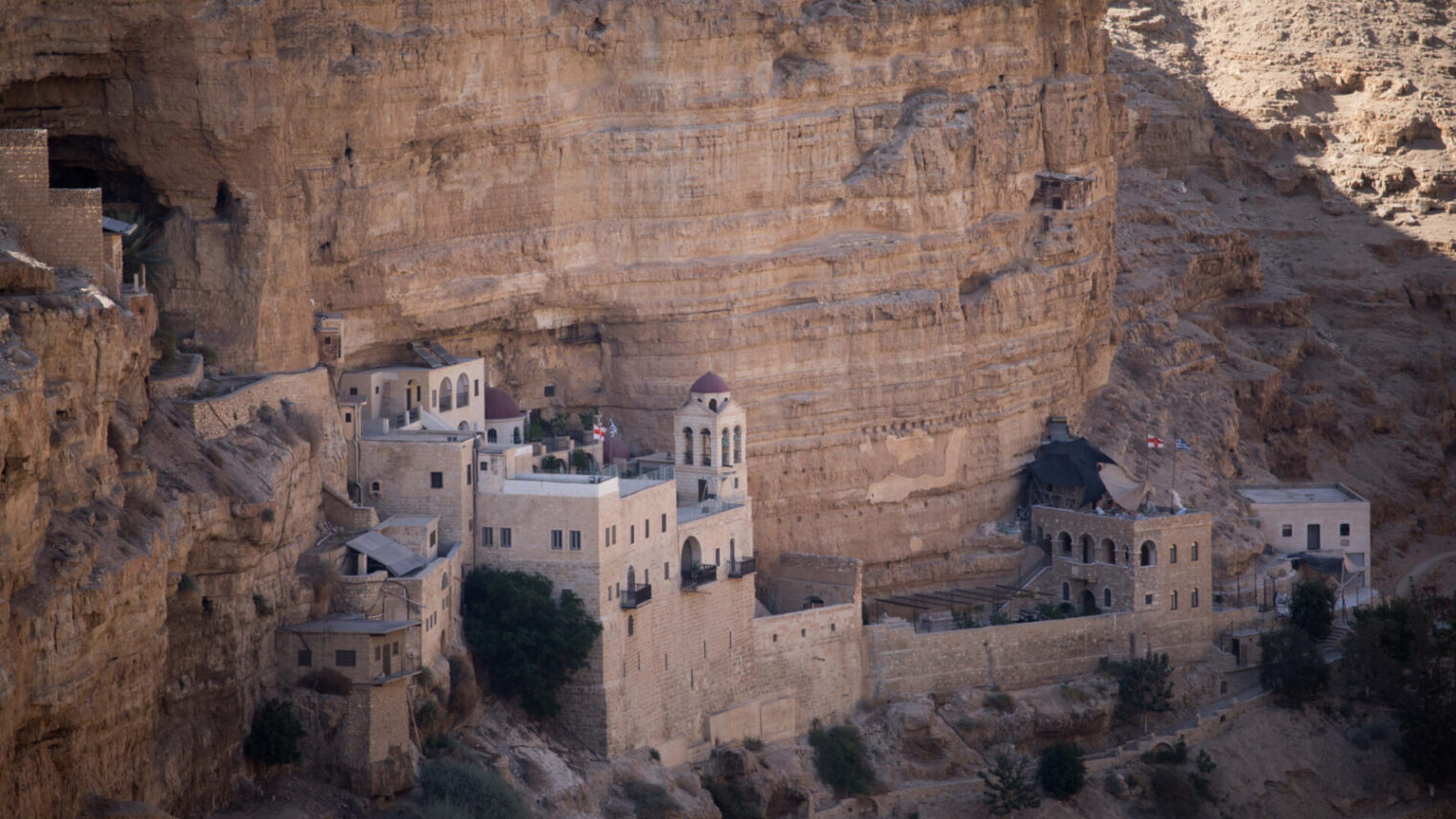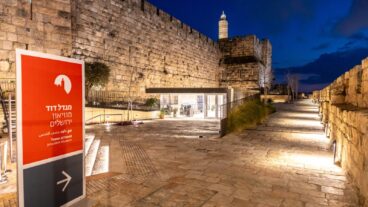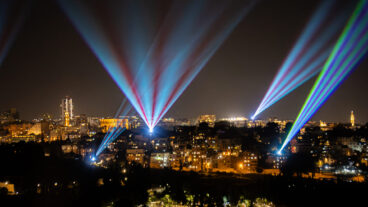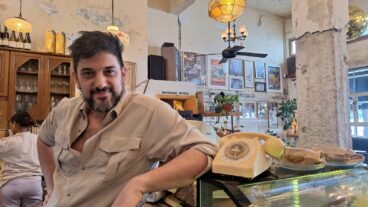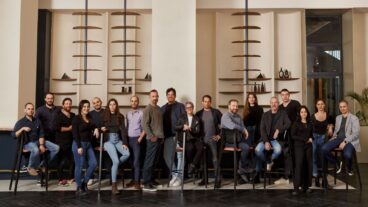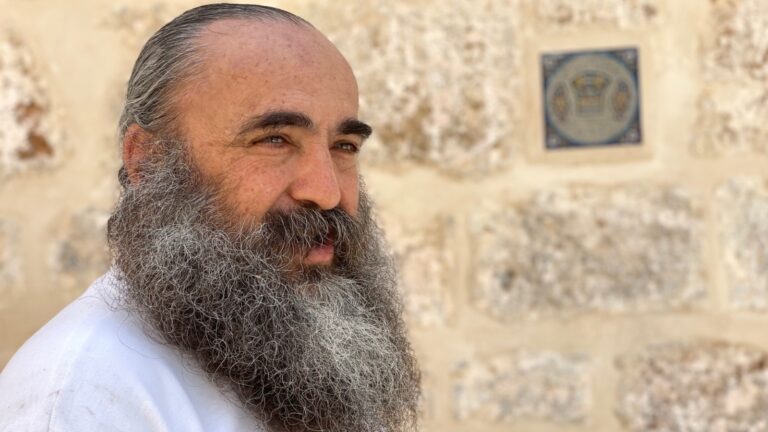Israel is filled with churches, which is hardly a surprise considering this is the birthplace of Jesus, and the location of all those places you read about in the bible.
Many tourists will visit the most famous of the country’s churches – the gold-domed Church of Mary Magdalene and Church of the Holy Sepulcher in Jerusalem, and the Church of the Nativity in Bethlehem.
But there are many other historically significant and breathtakingly beautiful churches and monasteries dotted all over the country that are just as worthwhile to visit, and many have extraordinary tales to go with them.
Some are in fairytale locations with some of the best views in Israel, from the heart of the desert to mountaintops overlooking Israel’s seas. Most have been built and rebuilt over centuries.
Join us in an exploration of some of the country’s most beautiful churches.
Note: Be sure to check opening hours before you go, as they are subject to change.
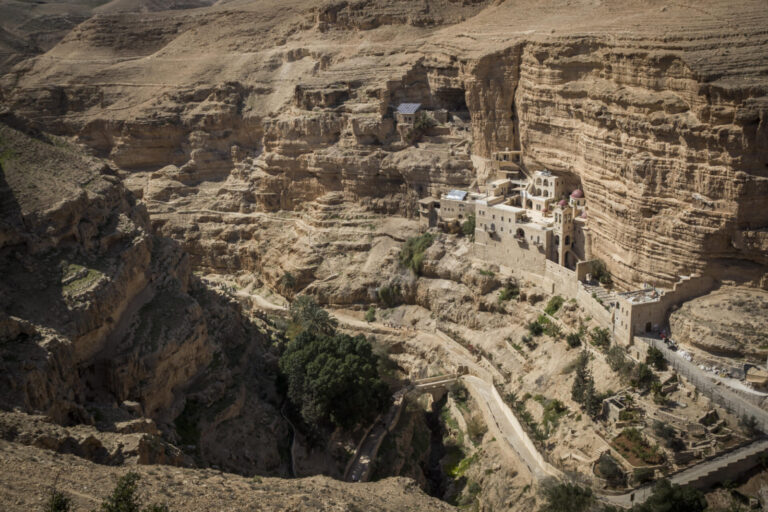
In the fifth century CE, Byzantine monks retreated to the Judean desert to live a simpler, more remote life.
During that time, more than 60 monasteries were built into the Judean desert landscape. While many were destroyed by invaders and a large 19th century earthquake, a handful remain active today.
Possibly one of the most beautiful examples is St. George Monastery, a Greek Orthodox monastery carved into the side of a narrow rocky mountain canyon at Wadi Qelt, a popular hiking spot.
Destroyed in the sixth century, rebuilt in the 12th, then abandoned and rebuilt again at the end of the 19th century, today the monastery is inhabited by Greek Orthodox monks, and still houses the relics of St. George of Choziba, after whom the monastery is named alongside two other saints.
The monastery is a site of intense pilgrimage, and sits parallel to the ancient road to Jericho referenced in Jesus’ Good Samaritan parable, and is said to be the setting of the “Valley of the Shadow of Death” from Psalm 23.
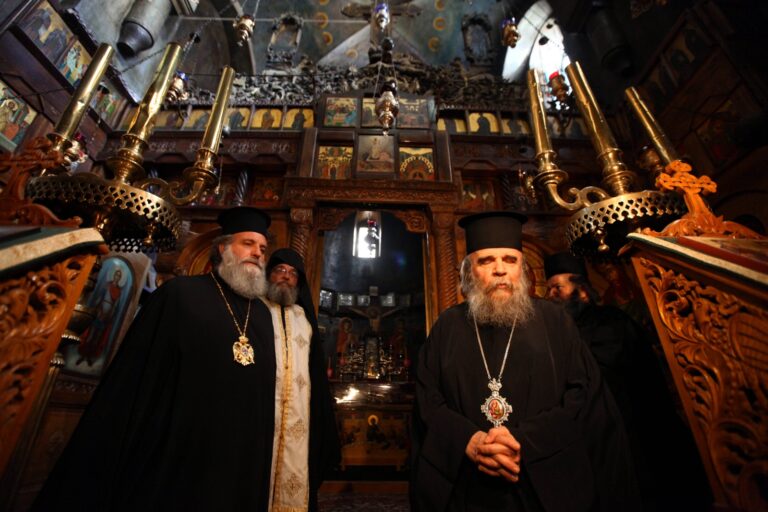
What to know before visiting: Wear your walking shoes and something comfortable. The buildings of the monastery can only be reached on foot via a steep one kilometer hike, and it can get very hot during the height of the summer. Visiting hours: Monday-Saturday 9am-1pm. Closed on certain holidays.
- St. James Cathedral (Armenian Church), Old City Jerusalem
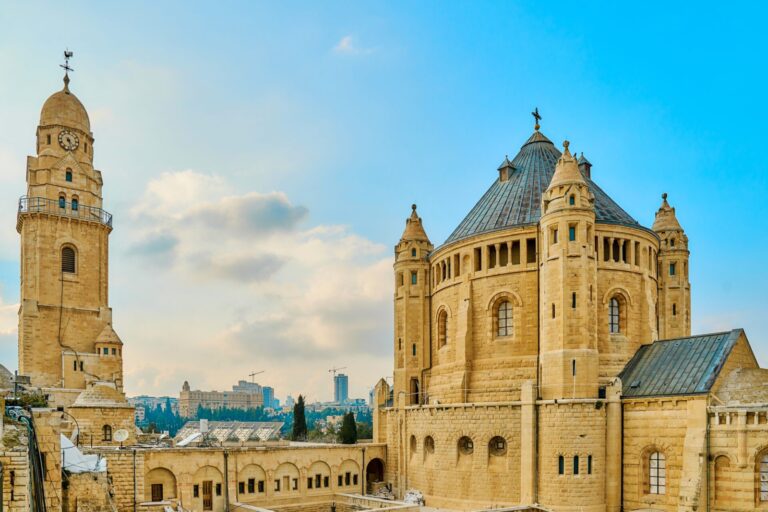
Tucked away in the quieter Armenian Quarter of Jerusalem’s Old City is the 12th century St. James Cathedral, the spiritual heart of the quarter, and the holiest site for Armenians in Israel.
The Armenian Orthodox church is where Kim Kardashian and Kanye West had daughter North baptized on the family’s reality TV show. The walled-in marvel near the Old City’s Zion gate was established in honor of two different St. James: Jesus’ apostle and Jesus’ relative who was Jerusalem’s first head bishop.
One of Israel’s only fully intact Crusader-era churches, it houses an astonishing number of gilded alters and chapels, each with palpable ties to history, such as one that houses a cross owned by Constantine the Great’s mother Helena.
The ornate and elaborate church is full of things to see – ancient frescos, carved stonework, some 130 religious paintings, magnificent skylights, elaborate chandeliers, a ceiling decorated with hanging ceramic eggs made in Turkey, and 18th century blue and white Armenian tiles.
It also includes an 18-meter-tall dome ceiling; and a beautifully adorned burial vault where the Virgin Mary is said to have laid the head of the Apostle St. James.
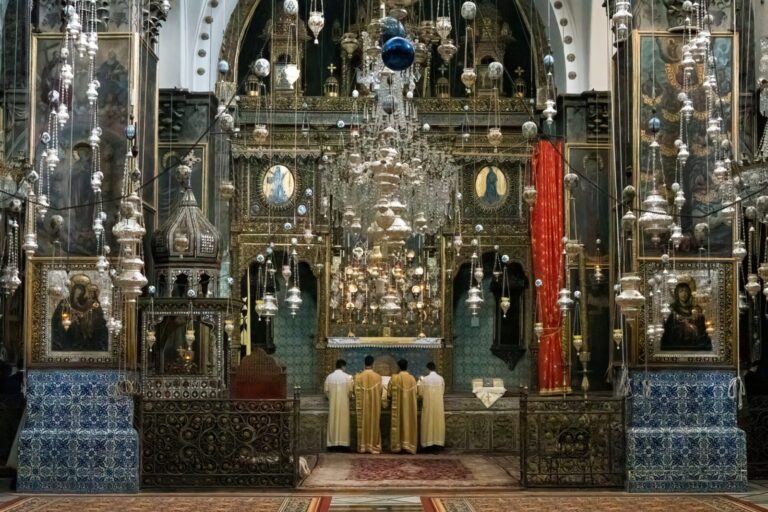
What to know before visiting: This church has restrictive hours to ensure it stays a quiet, spiritual refuge. Passersby may enter at prayer time, signified by the sounding of a gong. Try visiting on weekdays, 6:30-7:30am and 3-3:40pm; Saturdays at 8am; Sundays at 8:30am. Modest dress required. Information: 02-628-2331
3. Church of the Annunciation, Nazareth
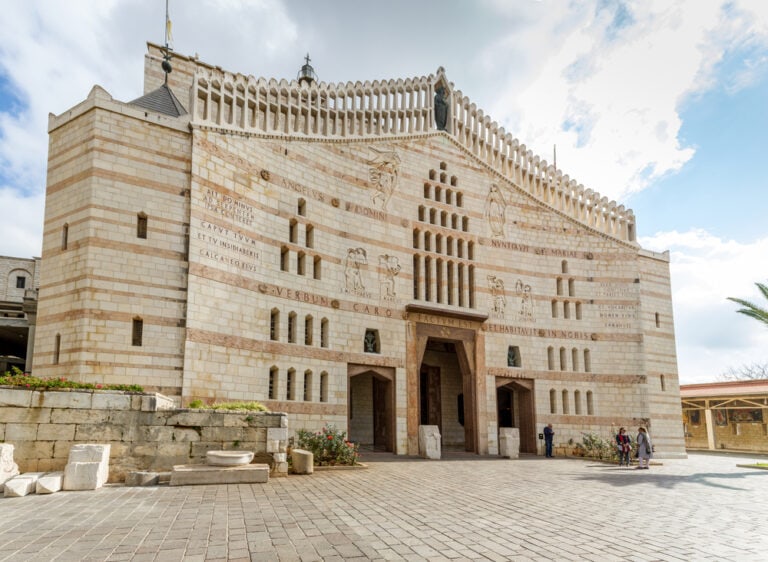
You can’t come on a visit to Israel to see churches and not stop at the Church of the Annunciation in Nazareth, one of the best known landmarks in the city and the biggest Catholic church in the Middle East.
Nazareth was the hometown of Jesus, and there are many significant religious locations to visit. It also has a very active Christian population and at Christmas there’s an annual Christmas market and parade and the streets are full of decorations.
The church is thought to have been built in the location where the angel Gabriel appeared to the Virgin Mary to announce that she will give birth to Jesus.
There’s been a church at this location since around the 7th century, but it was built and rebuilt repeatedly through the years. The church today was built in the 1960s, and was designed by Italian architect, Giovanni Muzion, in a style known as Italian Brutalism.
Two popes have visited the church to celebrate Mass there, Pope Paul VI, and Pope John Paul II.
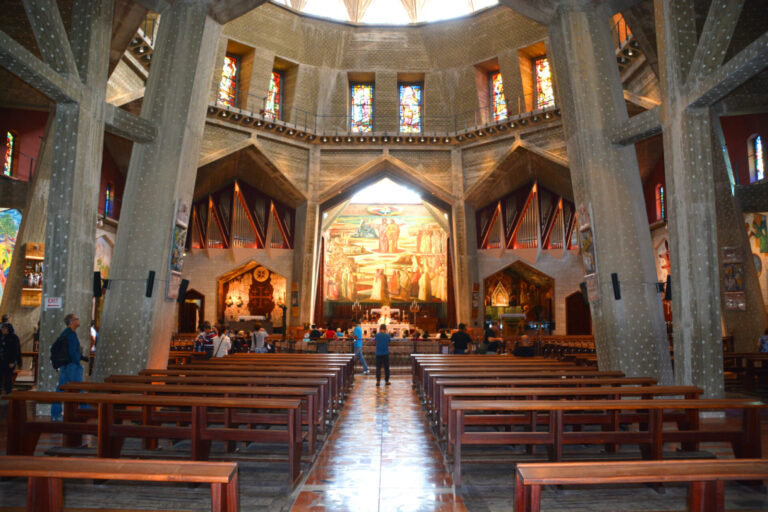
What to know before visiting: Opening hours 8am to 4.45pm every day.
4. The Wedding Church, Kafr Kanna
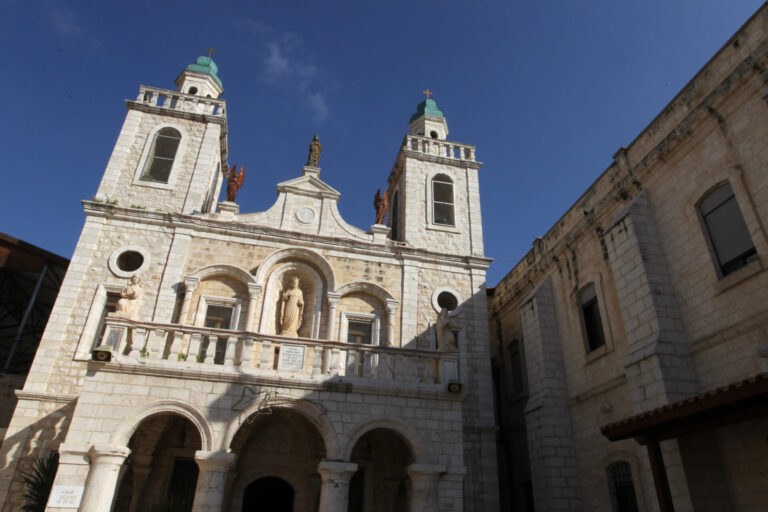
A spot in the Lower Galilee where Jesus is said to have performed his first miracle of turning water into wine at a wedding feast, the Wedding Church, renovated in the 1990s, houses ruins that date back to the fourth century synagogue it was built upon, and the Byzantine tombs that came later.
A place where couples to this day go to renew their wedding vows, this Roman Catholic church also showcases evidence of the archeological findings discovered there and has a particularly interesting Gothic-style façade covered in sculptures of angels and other religious figures.
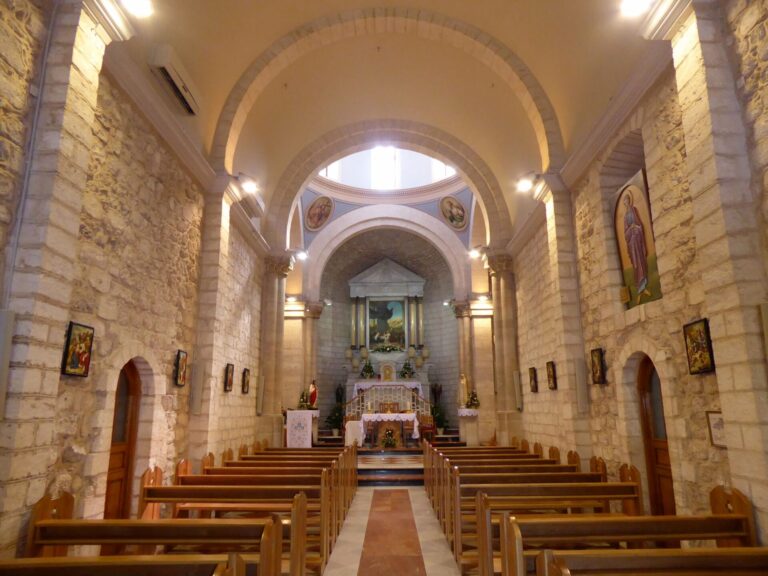
What to know before visiting: Opening hours are Monday to Friday: 8-12pm and 2-7pm. Saturday: 8-12pm.
- Dominus Flevit Church, Mount of Olives, Jerusalem
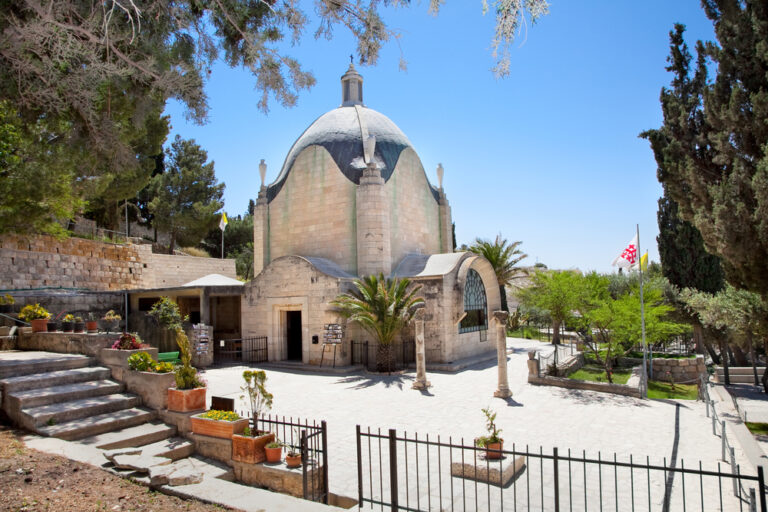
A teardrop shaped Roman Catholic church on the Mount of Olives with a stunning panoramic view over the Old City of Jerusalem and the Temple Mount, and an epic window built for the perfect photo opp, Dominus Flevit (“The Lord Wept” in Latin) is one of many churches on the mountain not to be missed.
Built in 1955 over the ruins of a fifth century Byzantine church, it contains a beautiful preserved Byzantine mosaic floor that dates back to the 7th century, excavated tombs dating back to the late Bronze Age, and a courtyard with ancient olive trees, where on Palm Sunday, Jesus was said to have wept over the future fate of Jerusalem.
The church was designed by Italian architect Antonio Barluzzi in the shape of a teardrop with tear phials on the four corners of its dome.
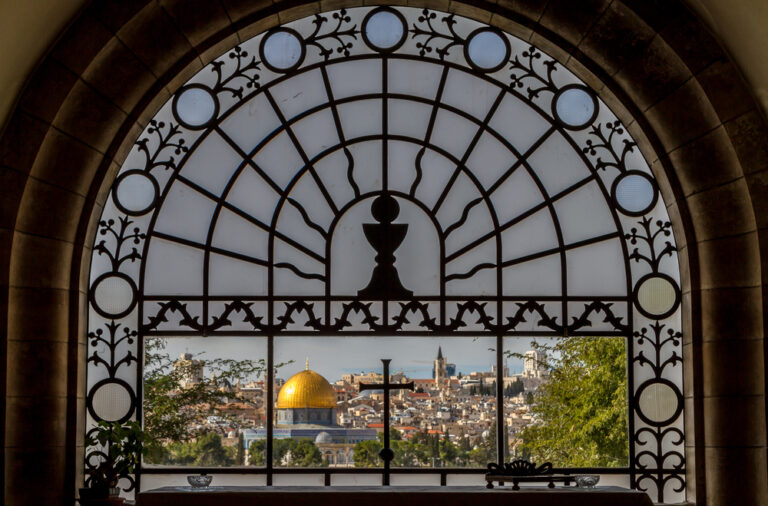
What to know before visiting: Open everyday 8-11:45am and 2:30-5pm. Information: 02-626-6450
6. Monastery of St. John in the Wilderness
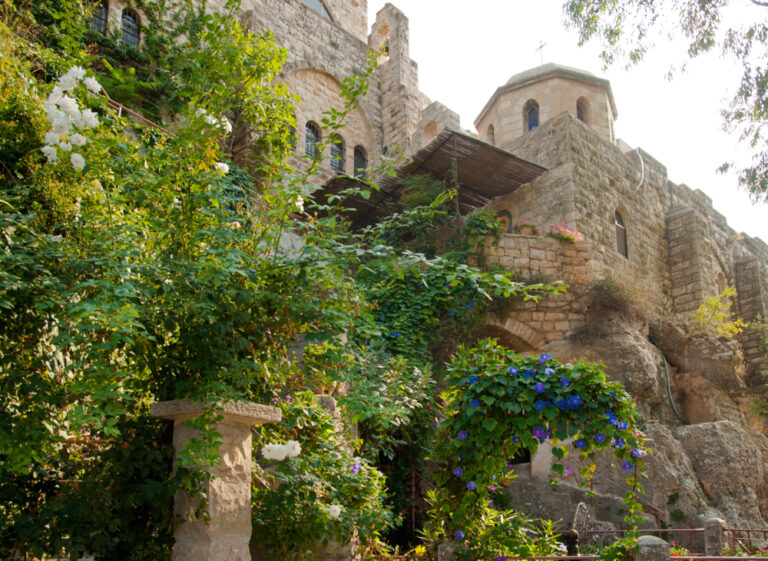
Just west of Ein Karem, a picturesque Jerusalem neighborhood known for its many Christian holy sites, the Monastery of St. John in the Wilderness sits nestled into the green hillside next to Moshav Even Sapir.
Representing the wilderness in which St. John the Baptist grew up, the Catholic monastery and accompanying church were built next to the natural cave turned chapel where John is thought to have once lived.
Built next to The Spring of the Hermit containing the tomb of Elizabeth, John’s mother, and enjoying a view of the stunning Soreq Valley, this quiet and tranquil retreat complete with water features and viewpoints holds immense meaning for the Christian faithful.
What to know before visiting: The monastery sits on a steep hillside. Reaching different parts of the site requires climbing a series of pathways and stone stairs. Make sure to wear proper footwear. Opening hours: Every day from 8.30am-12pm, and 1.30pm to 5pm.
7. St. Mary of the Resurrection Abbey, Abu Ghosh
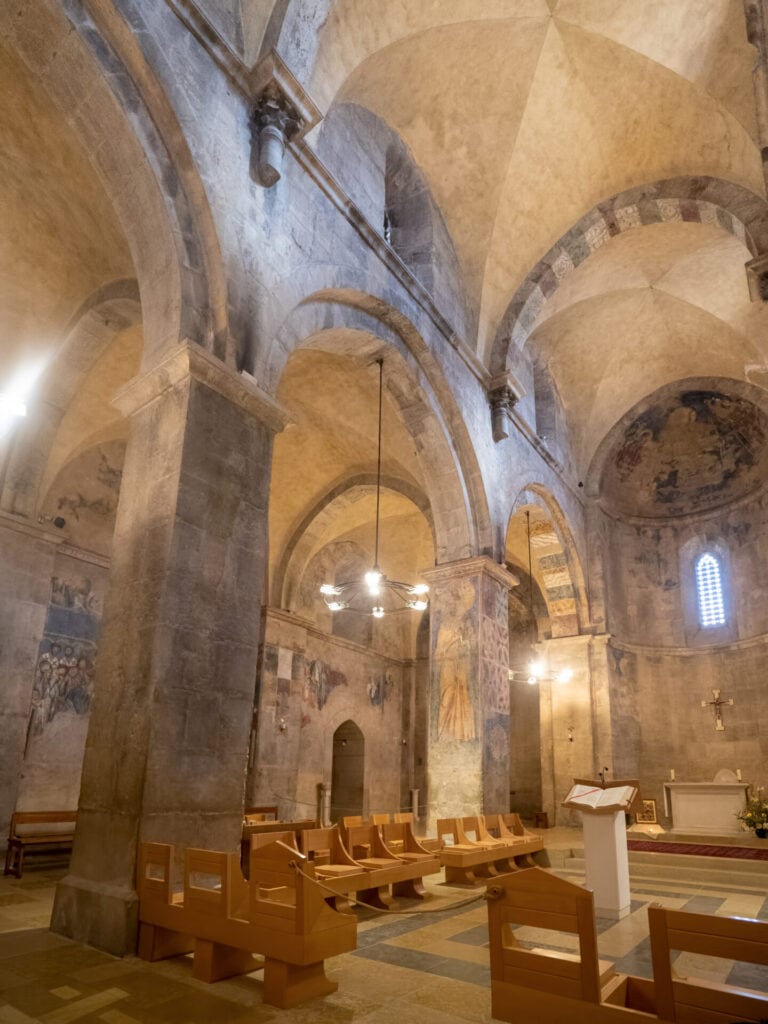
A Benedictine monastery in Abu Ghosh, an Israeli Arab town 10 kilometers west of Jerusalem, this Basilica-style church was built over the 12th century Crusader Church of Resurrection, which itself was built over Roman ruins in what is thought to be the biblical city of Emmaus.
Like many other churches of great biblical significance, this too was built on an ancient freshwater spring. The vaulted ceilings and interior arched stone walls, carrying the calming harmonies of the praying monks, are covered in partially preserved Crusader-era frescos.
The church also showcases a section of original mosaic floor, as well as beautifully kept grounds filled with flowers, date palms, grapevines and olive trees.
What to know before visiting: The church is an easy find in the town of Abu Ghosh right off the Tel Aviv-Jerusalem Highway 1. Visitors are welcome according to the following schedule: Sundays and feast days: Lauds at 7am, Mass at 10:30am, Vespers at 5pm; weekdays: Lauds at 7, Mass at 11:30 (except Fridays at 7), Vespers at 6. Information: 02-534-2798
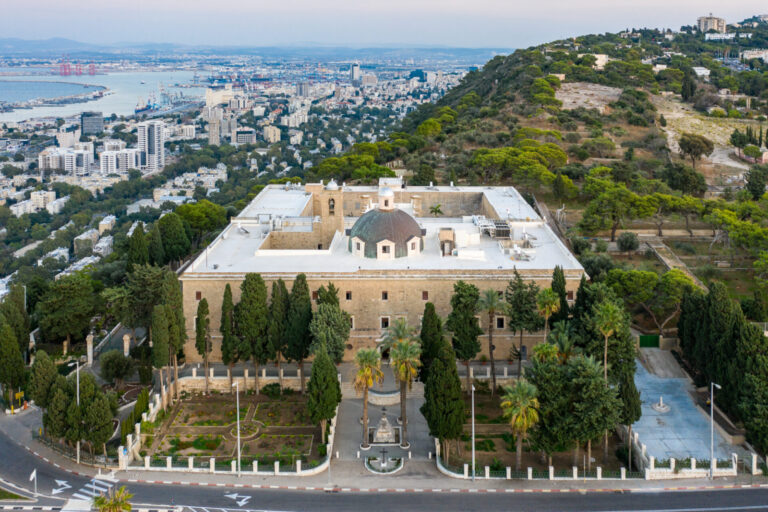
Up high on Mount Carmel, overlooking the bay of Haifa is Stella Maris (Star of the Sea) Carmelite Catholic church.
Stella Maris is a monument to history as well as a religious institution. Housing the cave where the prophet Elijah was said to have hidden — a spot just under the altar where worshippers can pray — Stella Maris also has a beautifully painted interior dome with biblical scenes including that of the Prophet Elijah ascending to heaven in a chariot of fire.
Inside you can also marvel at a statue of the Virgin Mary carved from Lebanese cedar, a permanent nativity scene, and walls made of white marble.
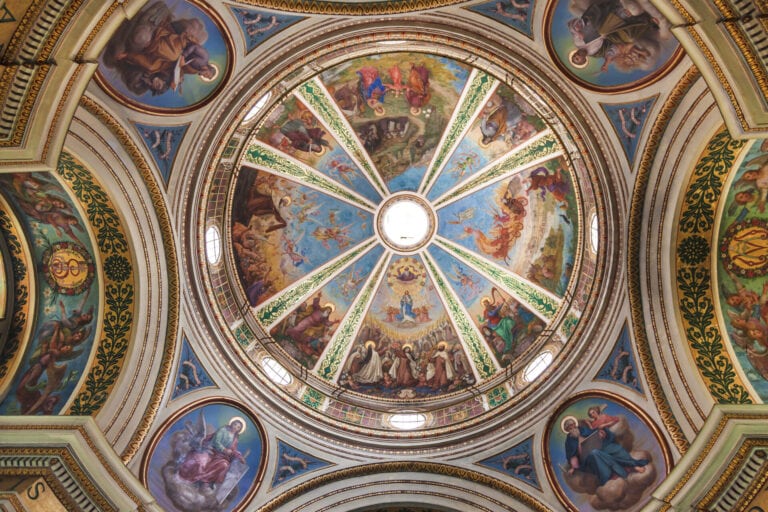
Outside you can enjoy a spectacular view of the Haifa Bay, and pay your respects at a memorial to the French soldiers who died at the hand of Ottoman Turkish forces after Napoleon’s disastrous retreat from Akko in 1799.
Stella Maris is also the destination annually for the second largest Catholic procession in Israel.
During World War 1, the statue of Our Lady of the Scapular was removed from the church and hidden in a protected location in Haifa. After the war in 1919, it was brought back to the church in a small procession. Since then, every first Sunday after Easter, large crowds of Catholic Christians and church leaders accompany the statue on its way from Haifa up to the church.
What to know before visiting: Open to the public every day from 6:30am to 12:30pm and 3-6pm.
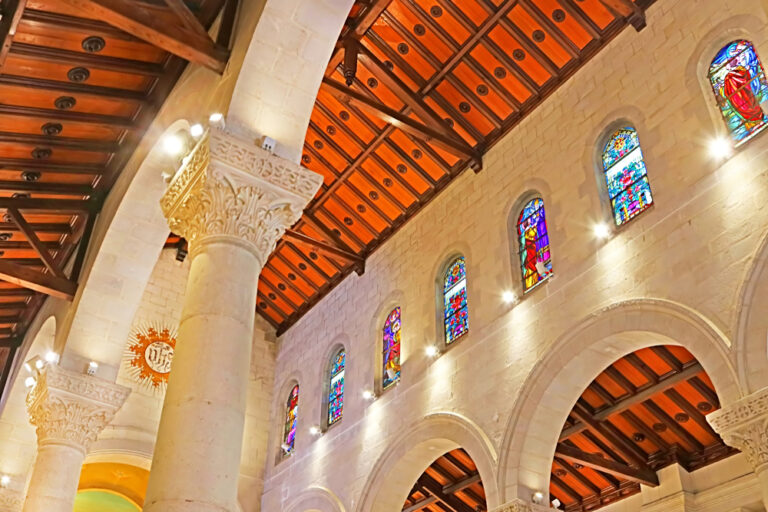
Built over what is believed to the be site of Joseph’s carpentry shop, St. Joseph is another one of the inherently special churches in Jesus’ Galilean hometown.
Though it often takes a back seat to a series of other significant churches in the area, including the nearby Church of the Annunciation, mentioned above, it is no less fascinating to visit.
Built in 1914 over the ruins of a 12th century Crusader church (which like most of the other churches, was built over an earlier Byzantine church), St. Joseph has a series of caves below, including one with archaeological findings from biblical times, and one considered to have been Joseph’s workshop.
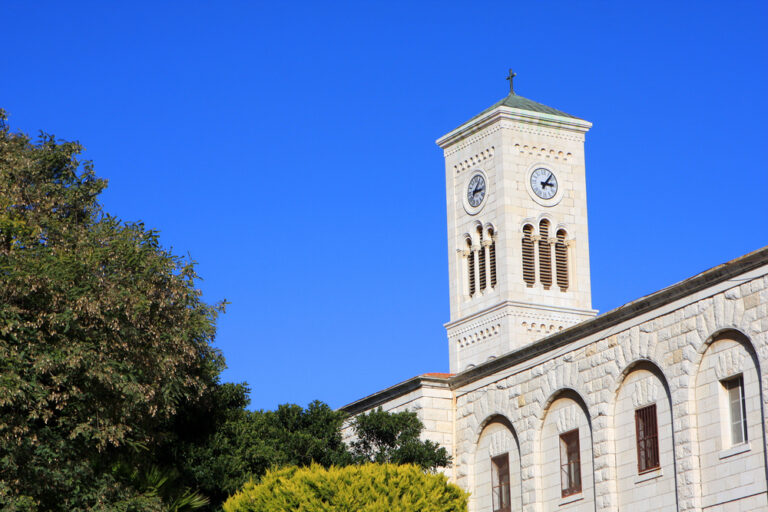
What to know before visiting: Open Monday to Saturday, 8am to 5pm (winter); Saturday to Sunday, 8am to 6pm (summer)
If you want to see more beautiful churches in Israel, click on the video below:




